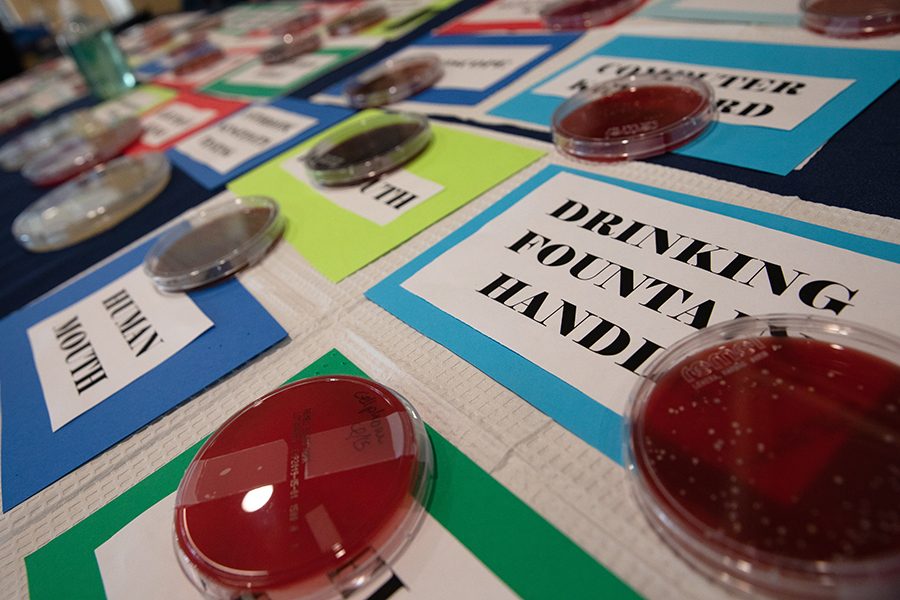Microbiology students collect bacteria samples from campus
Bacterial cultures were collected by Microbiology students and displayed on April 17
April 23, 2019
If you wandered into the lobby of the Health Education Building the morning of April 17, you likely saw microbiology students Michael Zimmerman and Angela Boltz standing behind a table filled with colorful petri dishes.
A couple days earler, students had collected samples from various locations on campus: bathrooms, dryers, and even some creative student submitted locations. During the event called “How well do you Purell?” Zimmerman and Boltz spoke to students about their findings, good versus bad bacteria, and the importance of effective handwashing. What and how much grew on the petri dishes could be shocking to those unaware of how much bacteria we encounter each day.
While most of what was found was normal skin flora, bacteria that generally lives on all of us, there were a few shocking discoveries.
The most shocking was a sample that found methicillin-resistant Staphylococcus aureus (MRSA).
MRSA is a type of staph infection known for being antibiotic resistant, which sounds scary. Don’t worry though, according to the Center for Disease Control, MRSA is found in approximately 5 percent of patients in U.S. hospitals – either on their skin or in their nose. Of these, most are likely just carriers, meaning they carry the bacteria, but are not infected. Most infections occur in healthcare settings in patients who already have weakened immune systems.
While we don’t have too much to worry about with MRSA in a general setting, you can prevent an infection by properly washing your hands with warm, soapy water or an alcohol-based hand sanitizer, practicing good hygiene, and avoid sharing personal hygiene products like towels and razors.
While it can be frightening to think of all the germs and bacteria we can’t see, Zimmerman and Boltz reminded students that not all bacteria are bad. Some are quite helpful in keeping us healthy, functioning humans.































